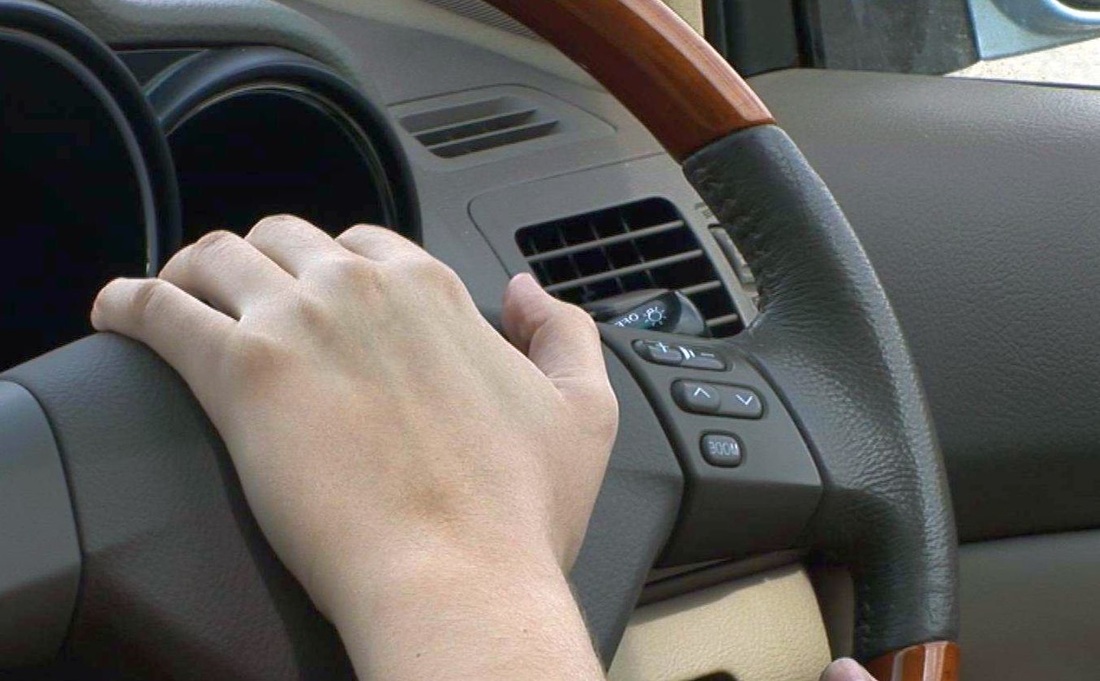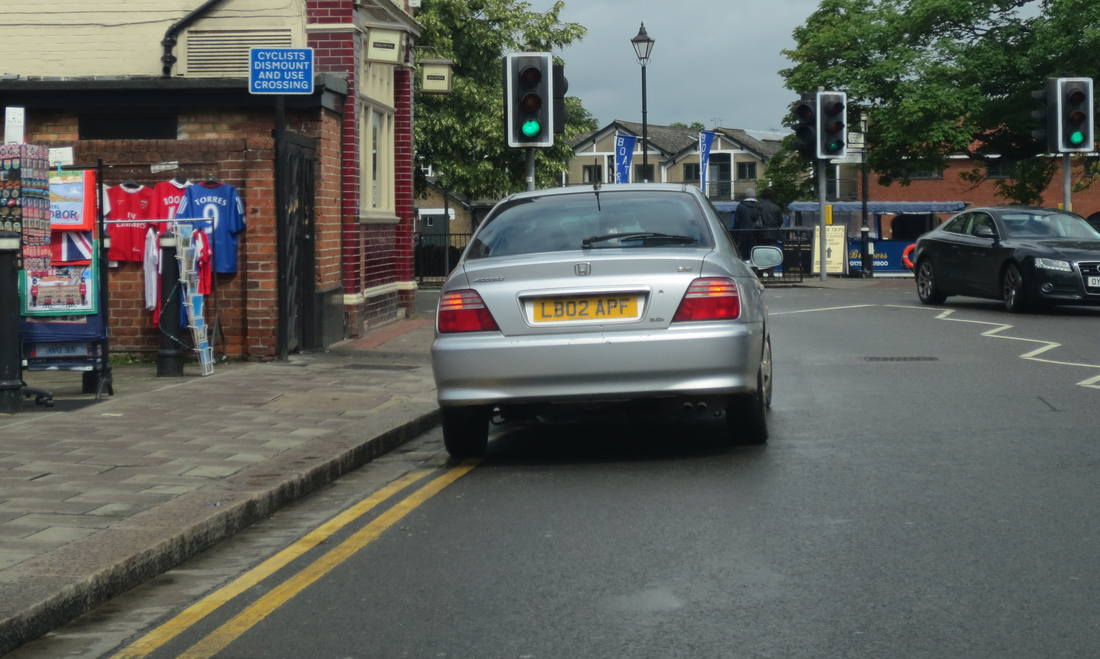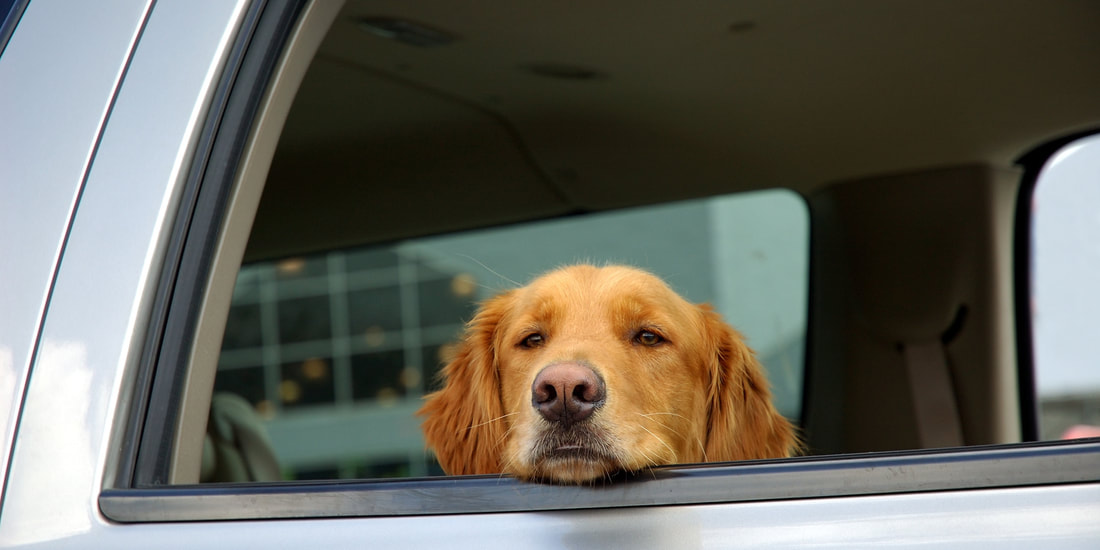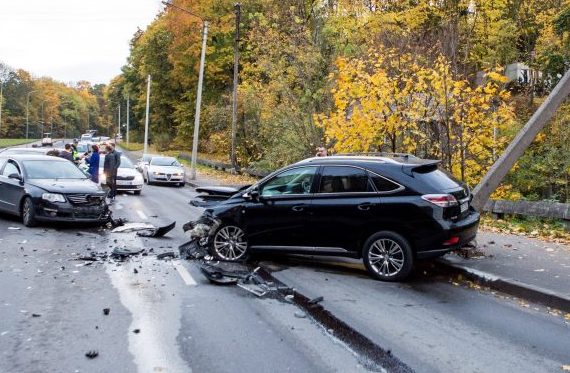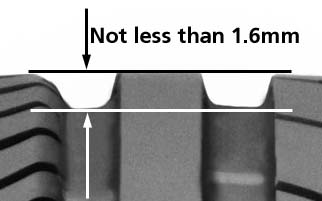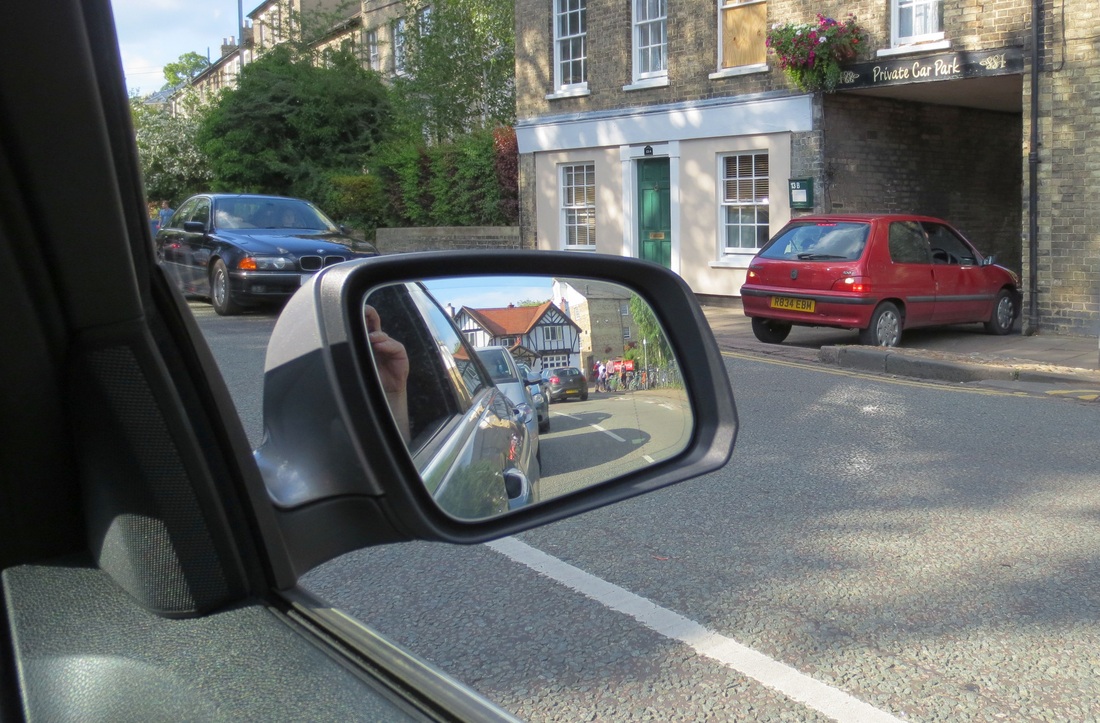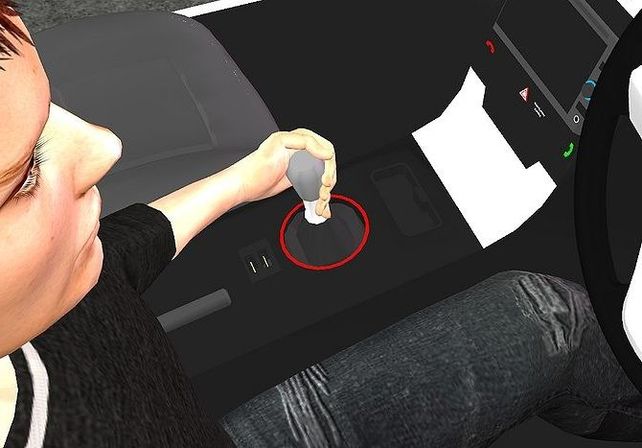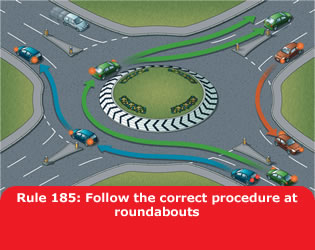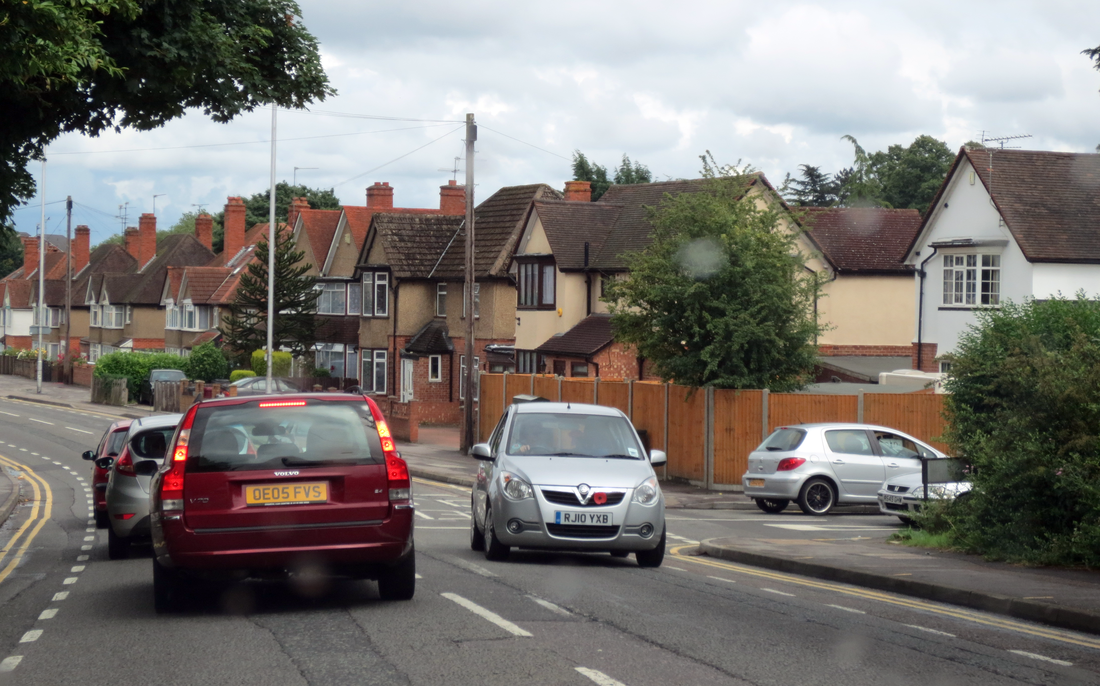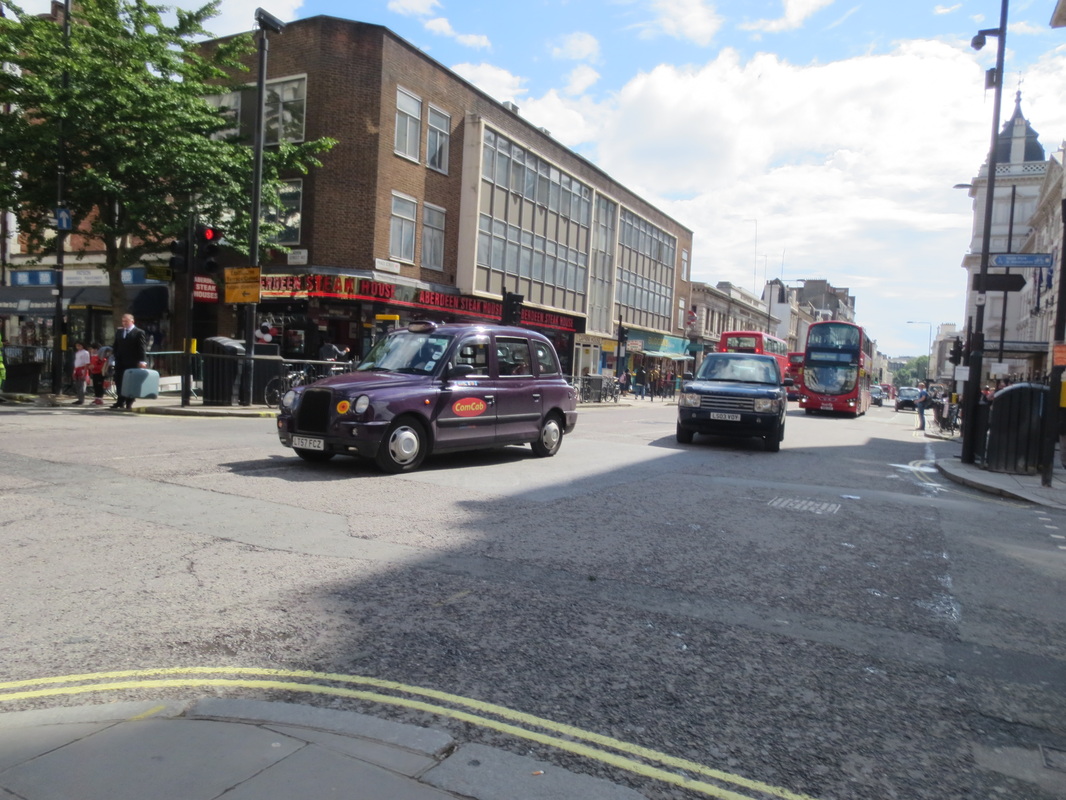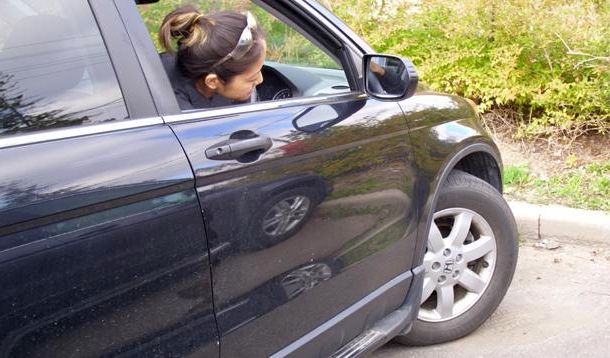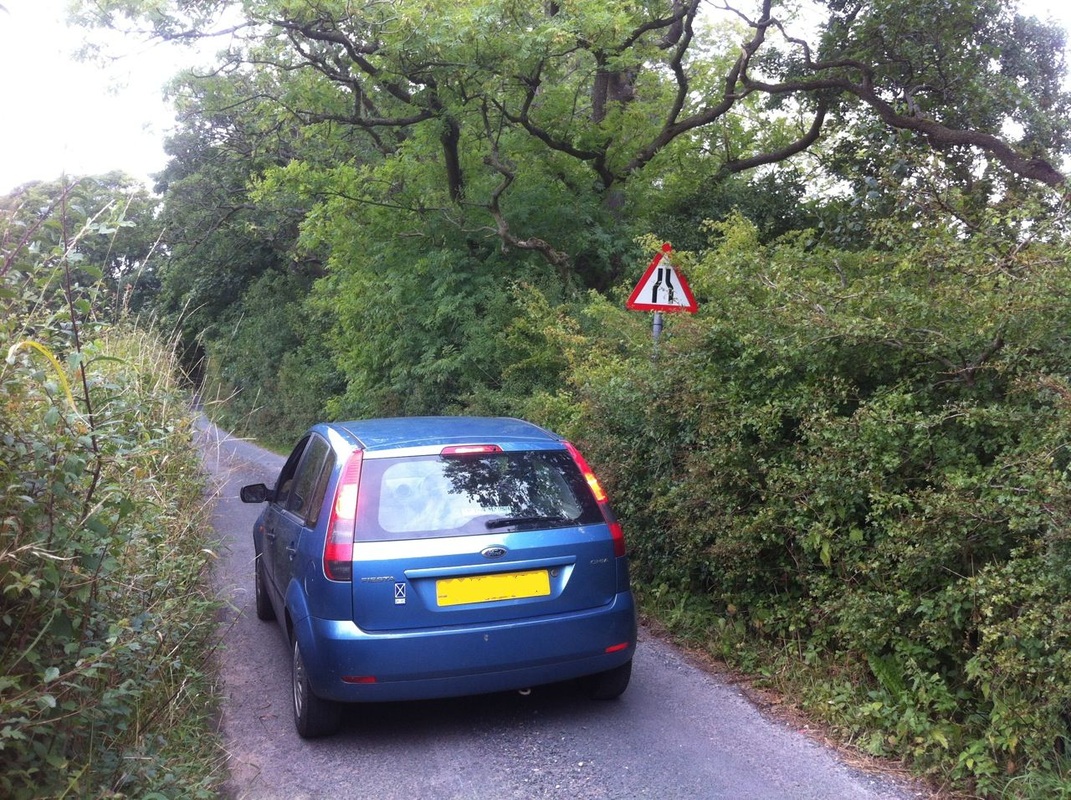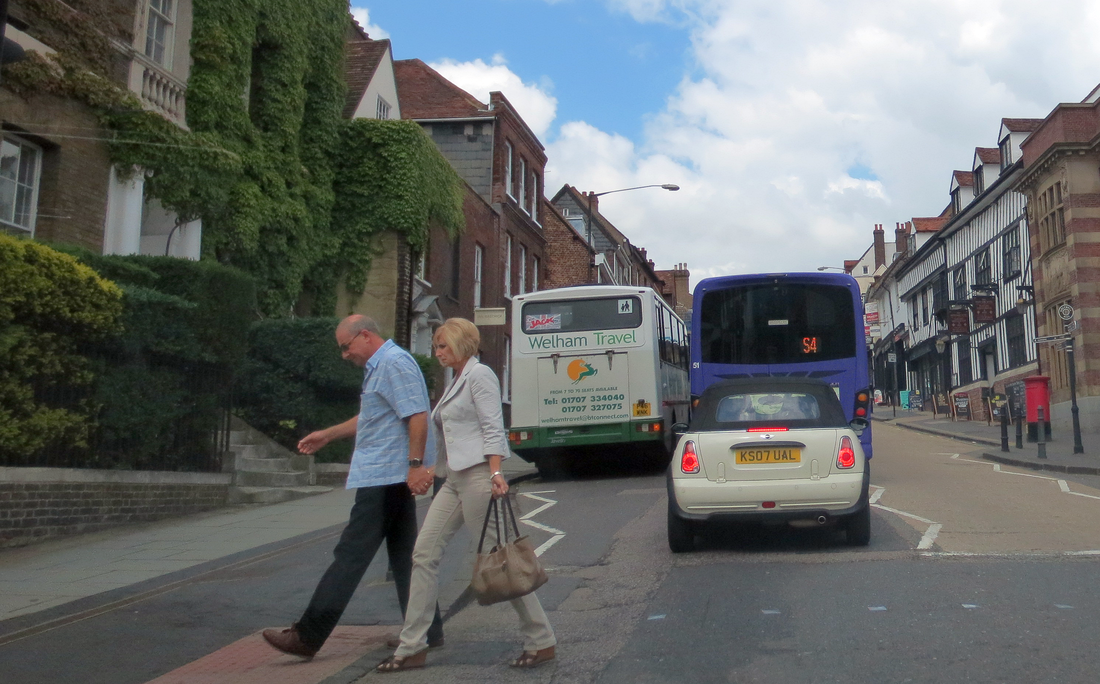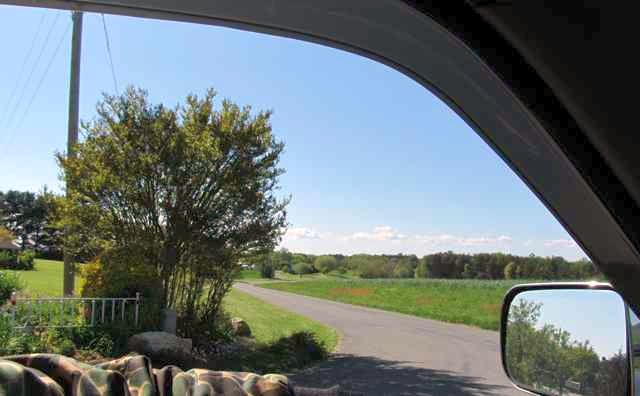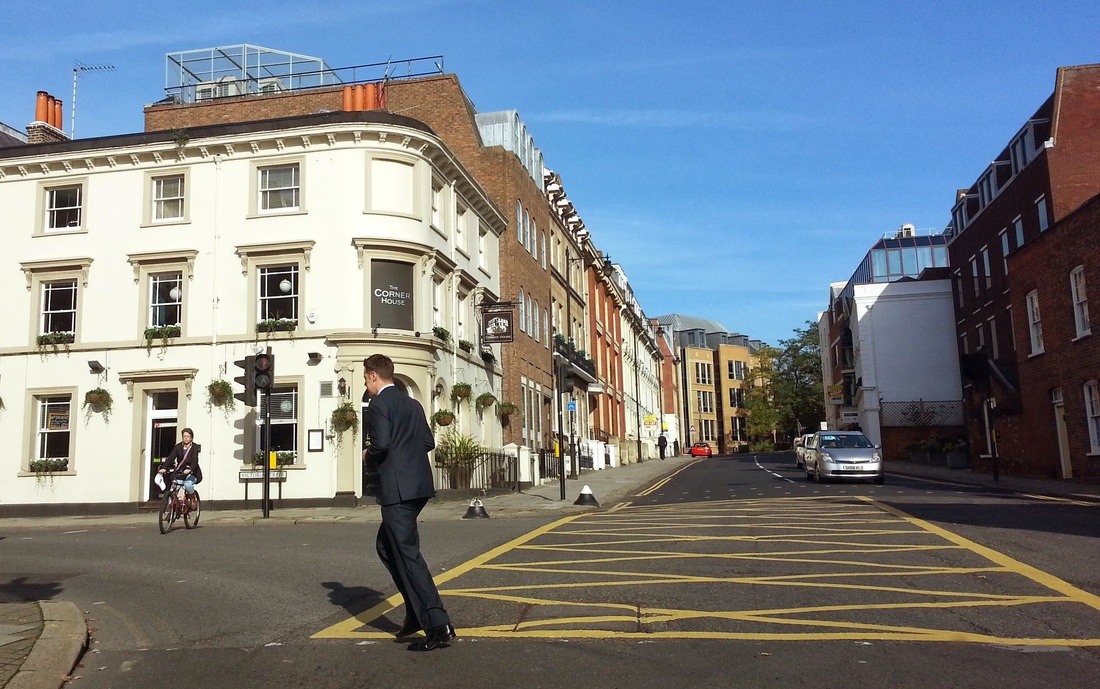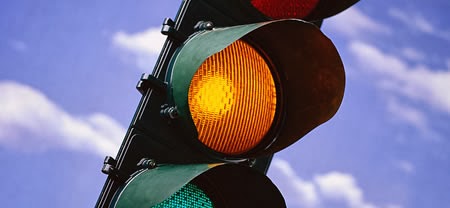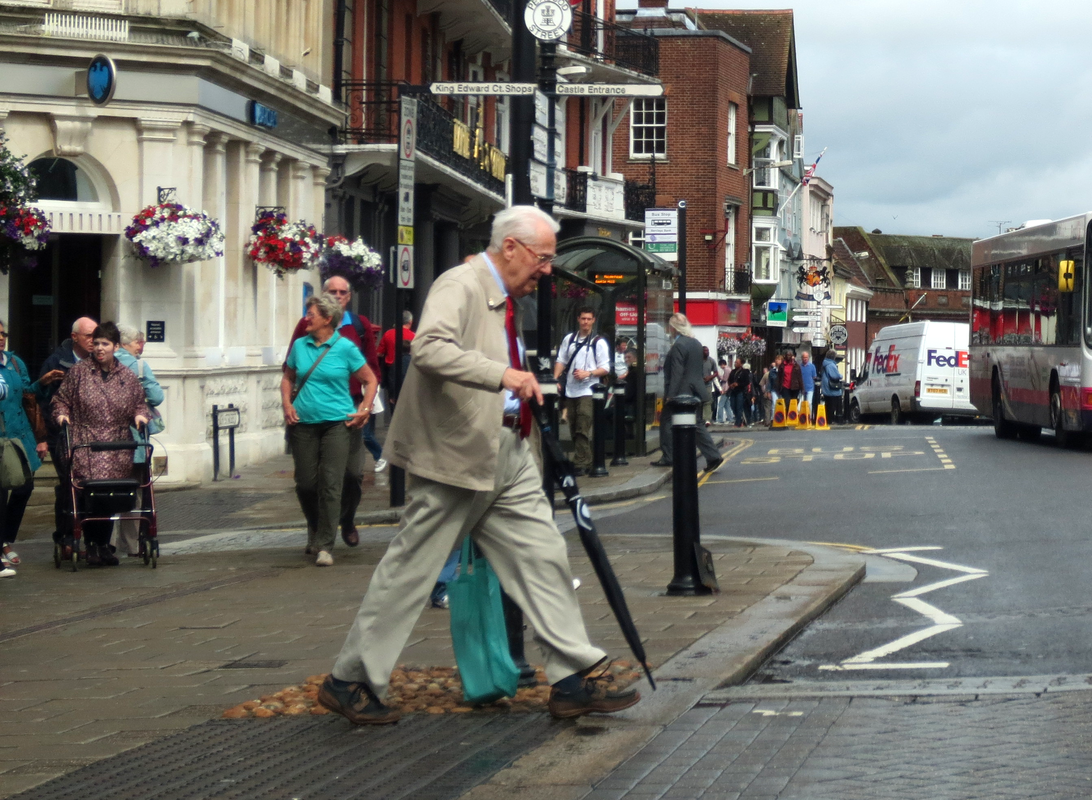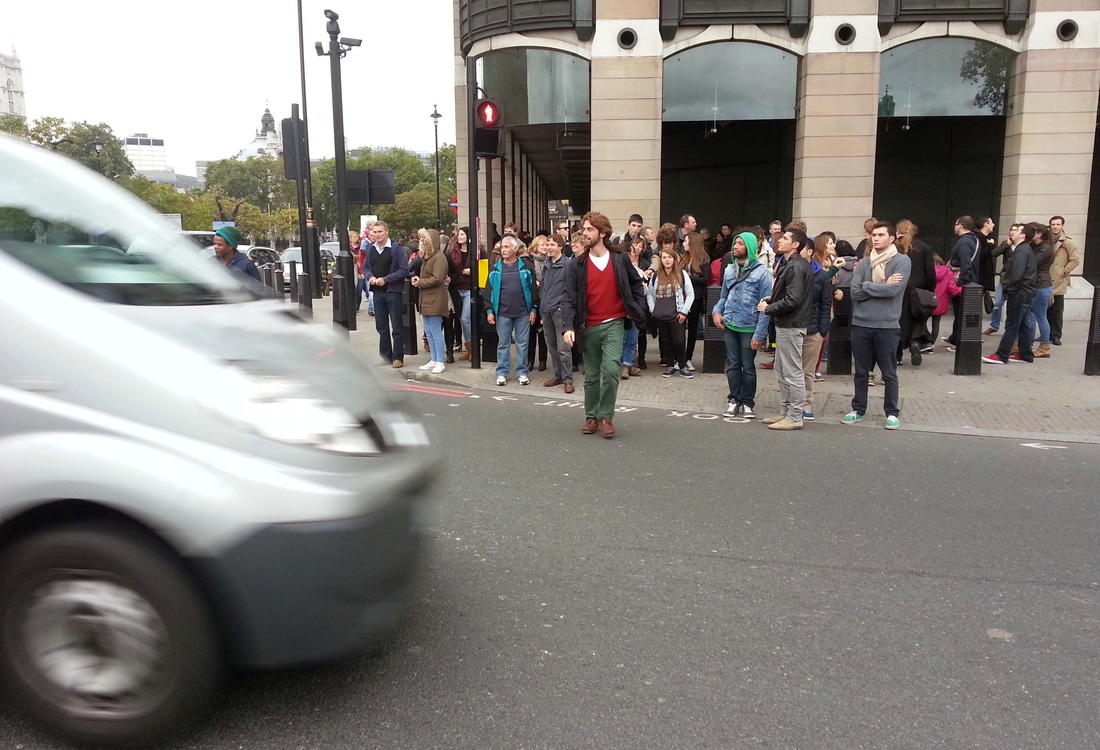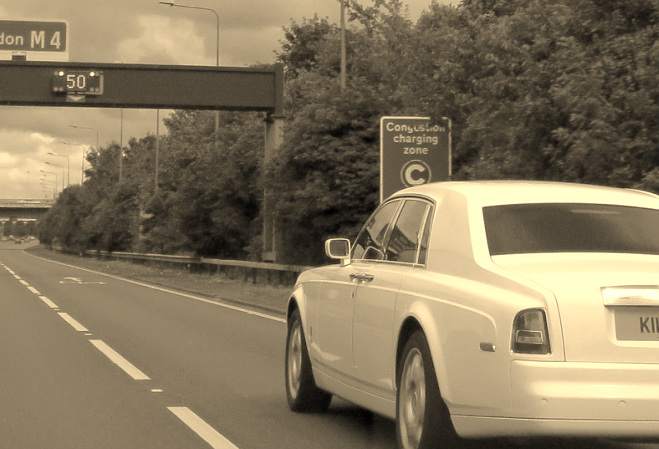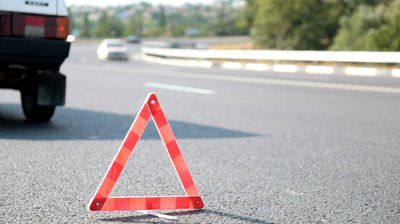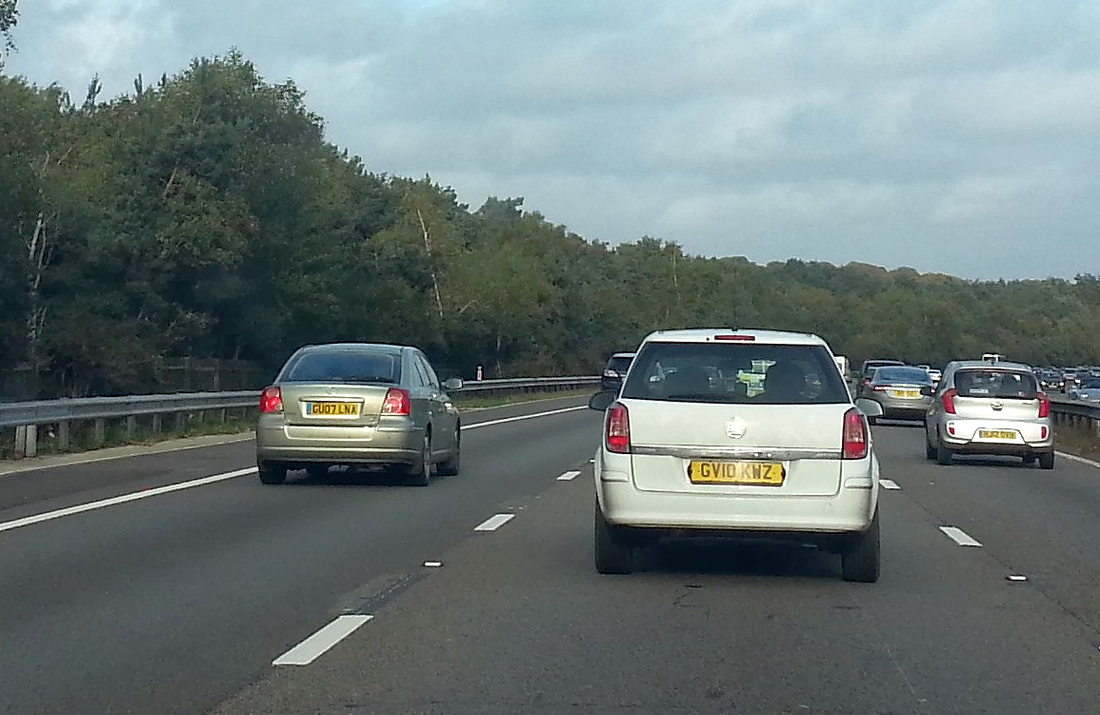|
If there is not the slightest chance of anyone being affected by you moving off, including oncoming traffic and pedestrians, then there is no need for signalling. However, we recommend always signaling before moving away.
If you are ready to move off and you see a vehicle approaching from the rear to pass you, do not indicate off if you intend on waiting for them to pass. Wait until the vehicle has passed.
0 Comments
A horn should only be used when warning someone of any danger due to another vehicle or any other kind of danger, and not to indicate your annoyance.
It is illegal to use a horn on a moving vehicle on a restricted road, basically a road that has street lights and a 30 mph limit, between the times of 11:30 p.m. and 07:00 a.m. You have to take an eyesight test before you start practical test. In good daylight you should be able to read a vehicle number plate with letters 79,4 mm (3,1 inches) high at a minimum distance of 20 meters (about 67 feet). If you need glasses or contact lences to read the number plate, that's fine. You must wear them while driving. At the start of your practical driving test you have to correctly read a number plate on a parked vehicle.
If you can’t, you’ll fail your driving test and the test won’t continue. DVLA will be told and your licence will be revoked. When you reapply for your driving licence, DVLA will ask you to have an eyesight test with DVSA. This will be at a driving test centre. If you’re successful, you’ll still have to pass the DVSA standard eyesight test at your next practical driving test. By taking unrestrained pets in the car drivers are putting themselves at risk of potentially deadly distractions.
Highway Code states: “When in a vehicle make sure dogs or other animals are suitably restrained so they cannot distract you while you are driving or injure you, or themselves, if you stop quickly. A seat belt harness, pet carrier, dog cage or dog guard are ways of restraining animals in cars.” Breaking the Highway Code doesn’t carry a direct penalty, but drivers could still be pulled over for driving without due care and attention. This can result a fine and penalty points - and if an unrestrained pet has caused an accident, insurers are unlikely to pay out. What to do when driving with pets
If you have an accident causing damage or injury you must give the following to anyone with ‘reasonable grounds for requiring them,’ for example an insurance company:
You also need to give the owner’s name and address if the vehicle isn’t yours. You must report the accident to the police within 24 hours if you don’t give your details at the time of the accident. You must also report the accident to your insurance company, even if you’re not planning to make a claim. You should tell the police if you have an accident with someone who’s not insured.
Your insurance company will also be able to give you more advice. You might also be able to get compensation if you’re the victim of an uninsured or hit and run driver. gov.uk The legal minimum tread depth for cars is 1.6 millimeters. This 1.6 mm should be in a continuous band throughout the central three-quarters of the tread width, throughout the whole of the circumference.
This rule is applicable for Cars and Light trailers including Caravans weighing up to 3,500 Kgs and/or eight passenger vehicle. This also includes Motorcycles above 50cc, all these vehicles must ensure that the grooves of the tread pattern have a depth of a least 1 mm throughout a continuous band measuring at least three-quarters of the breadth of the tread and round the entire outer circumference of the tyre. It is important to adjust the mirrors correctly before driving. Never try to do this while driving. If you need to adjust your mirrors or seat position, stop in the safe place.
To steer, you need both the hands. Try to change the appropriate gear and then ensure both of your hands are on the wheel before starting to turn the steering wheel.
When taking the first exit to the left, unless signs or markings indicate otherwise - You should signal left and approach in the left-hand lane - You should keep to the left on the roundabout and continue signalling left to leave. When taking an exit to the right or going full circle, unless signs or markings indicate otherwise - You should signal right and approach in the right-hand lane - You should keep to the right on the roundabout until you need to change lanes to exit the roundabout - You should signal left after you have passed the exit before the one you want. When taking any intermediate exit, unless signs or markings indicate otherwise - You should select the appropriate lane on approach to and on the roundabout - You should not normally need to signal on approach - You should stay in this lane until you need to alter course to exit the roundabout - You should signal left after you have passed the exit before the one you want. When there are more than three lanes at the entrance to a roundabout, use the most appropriate lane on approach and through it. https://www.gov.uk/ See how to negotiate roundabout: The stopping distance will depend on your attention, the road surface, the weather conditions and your vehicle.
You must signals clearly to let others know what you intend to do, and it is necessary to use only the signals shown in the Highway Code, You should use the Reversing Lights to let other road users know that you intend to reverse.
You should not reverse into a main road from a side road. The main road is likely to be busy and the traffic on it moving quickly. Cut down the risks by reversing into a quiet side road.
What might you damage on your car if you turn the steering wheel while the car is stationary?13/7/2014 If you are turning the steering wheel when the car is stationary can cause unnecessary wear to the tyres and steering mechanism. This is known as ‘dry’ steering.
If you are going to pass on a narrow road, you need to plan early and well before so that you get a better view of the road ahead.
You need to check as you are turning. Slow down your vehicle and give priority to the pedestrian who is crossing the road.
Sometimes buildings, hedges, bends and other obstacles can obscure your view. Move forward slowly until you see the road clearly before you pull out.
You can wait in a yellow box junction if you want to turn right and are stopped from doing so by oncoming traffic, or by other vehicles waiting to turn right.
Which type of crossing has a flashing amber phase, and what does it mean for you as a driver?5/3/2014 Pelican Crossings are the crossings which are signal-controlled crossings where flashing amber follows the red 'Stop' light. This crossing is made aware to the drivers with its traffic lights and zig-zag road markings.
As a driver, you MUST give way to any pedestrians on the crossing, when the amber light is flashing. If the amber light is flashing and there are no pedestrians on the crossing, you may proceed with caution. After the lights start flashing, watch out for people making a last-minute dash. Be prepared to let them cross but no not wave others onto the crossing. The approach to, and exit from, a pedestrian crossing is marked with zigzag lines. It also means that you must not park on them or overtake the leading vehicle when approaching the crossing. Parking here would block the view for pedestrians and the approaching traffic.
You should not wave or use your horn to invite pedestrians to let them know that they can cross as this could be dangerous if another vehicle is approaching. It should be left to the pedestrians to decide for themselves when it is safe to cross.
As you are approach a crossing
Watch out for pedestrian walking close to crossings as they may start to cross without looking at the traffic. While traveling on a two-lane dual carriageway you should stay in the left-hand lane. Use the right-hand lane only for overtaking or when turning right. After overtaking, move back to the left-hand lane when it is safe to do so.
If you breakdown on a carriageway you should put a warning triangle on the road at least 45 metres (147 feet) behind your broken-down vehicle on the same side of the road, or use other permitted warning devices if you have them. Always take great care when placing or retrieving them, but never use them on motorways.
The lane on the right may be used for overtaking or turning right. After overtaking, you should move back to the left lane when it is safe to do so. When you are changing lanes for overtaking or turning right, you should first use your mirrors and if necessary take a quick sideways glance to make sure you will not force other road users to change course or speed. When it is safe to do so, signal to indicate your intentions to other road users and when clear, move over.
If you are overtaking, watch for clues that traffic ahead of you is slowing down to turn right. gov.uk Overtaking on the nearside (left) is legally acceptable if you are driving on a multi-lane carriageway in congested conditions, and the lane to the left is moving at a faster speed than lanes to the right. In these circumstances overtaking on the left is permissible although extra caution is needed for an awareness of other vehicles moving to the faster lane on the left.
It is also permissible to overtake on the left if the vehicle in front is signalling to turn right. Overtaking on the left in these circumstances although permissible is subject to road markings and signs that may suggest otherwise. |

